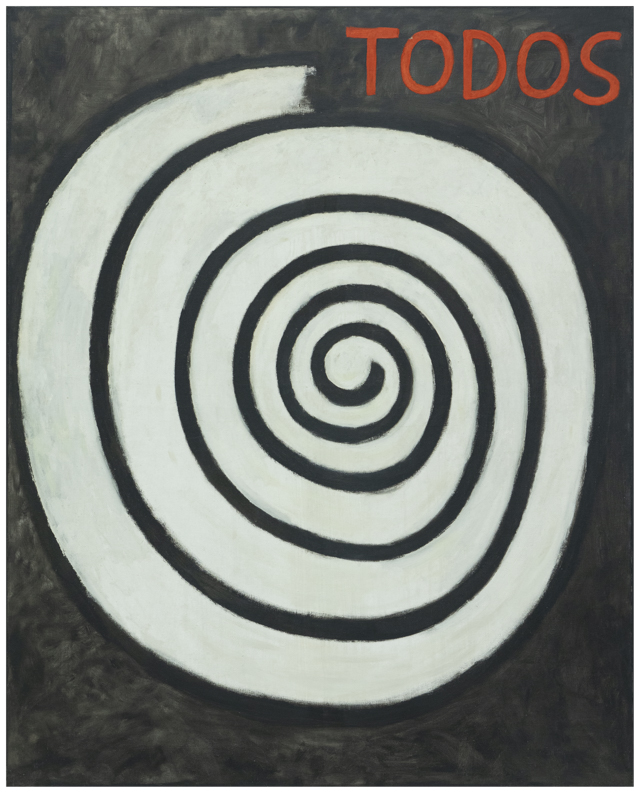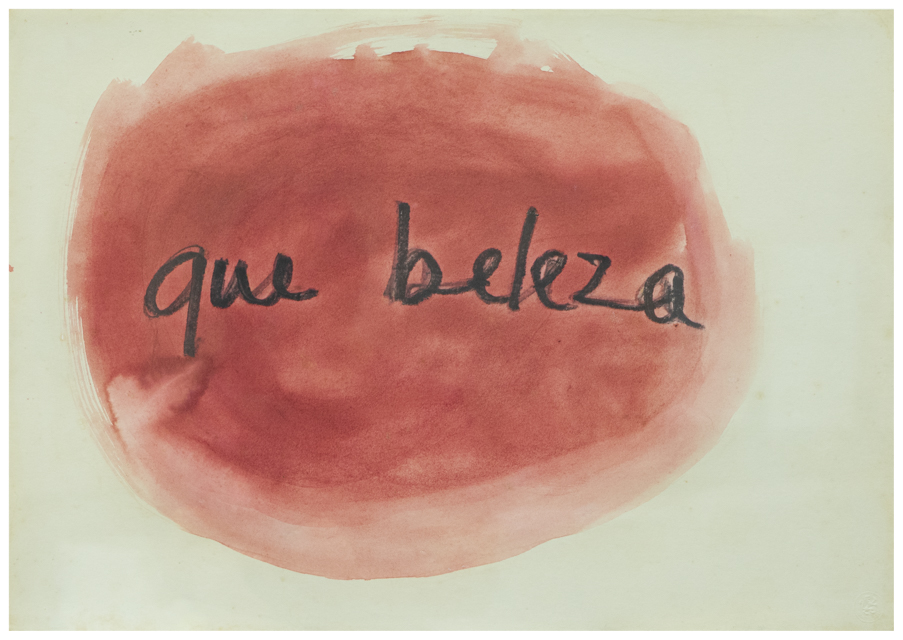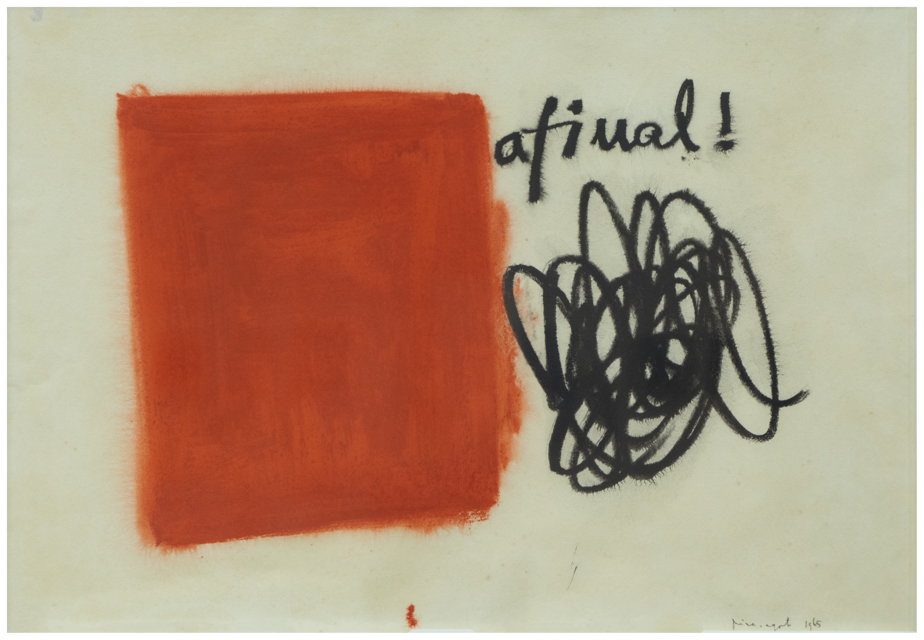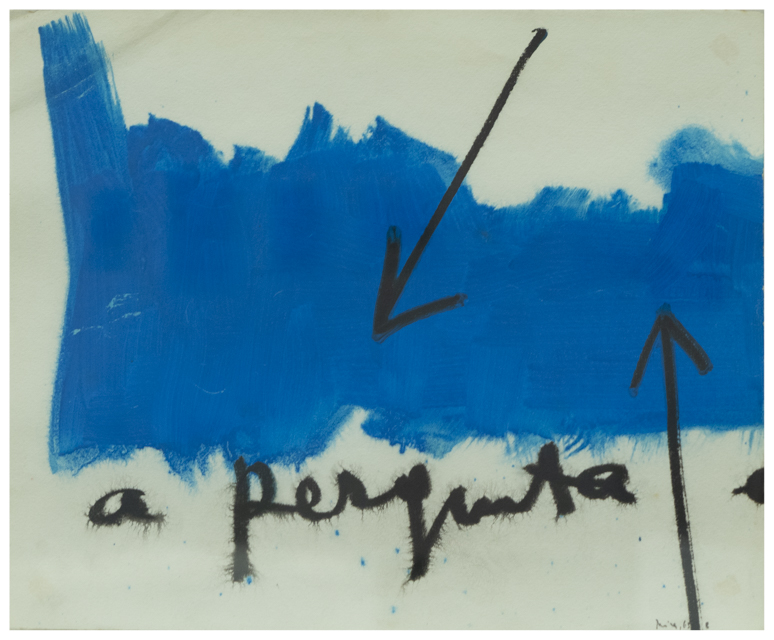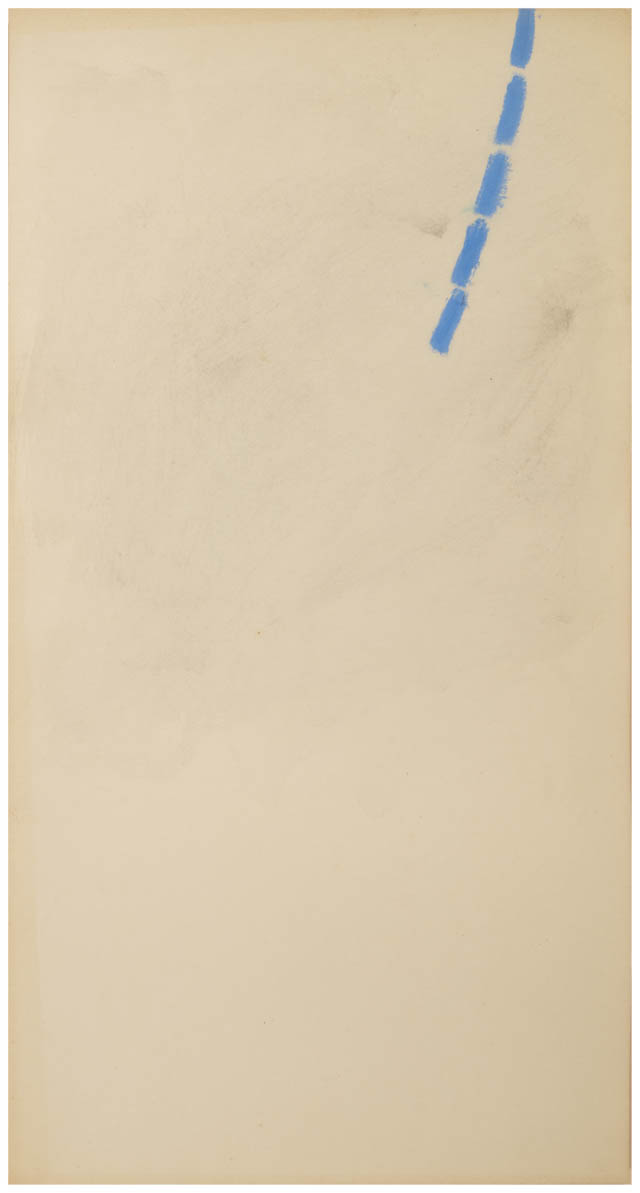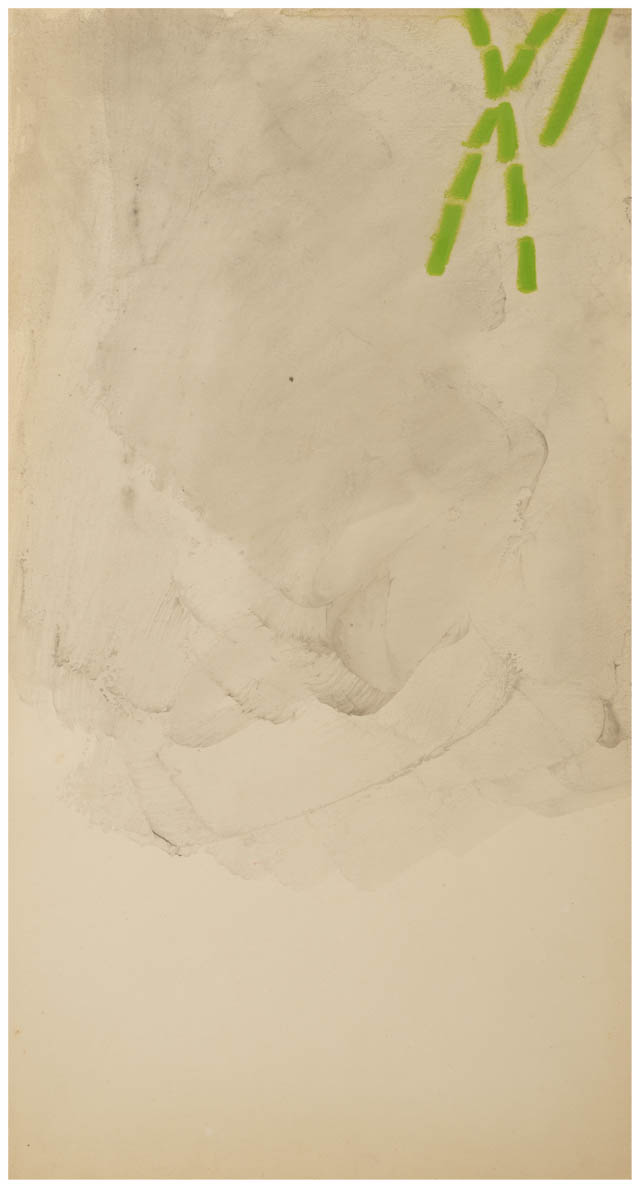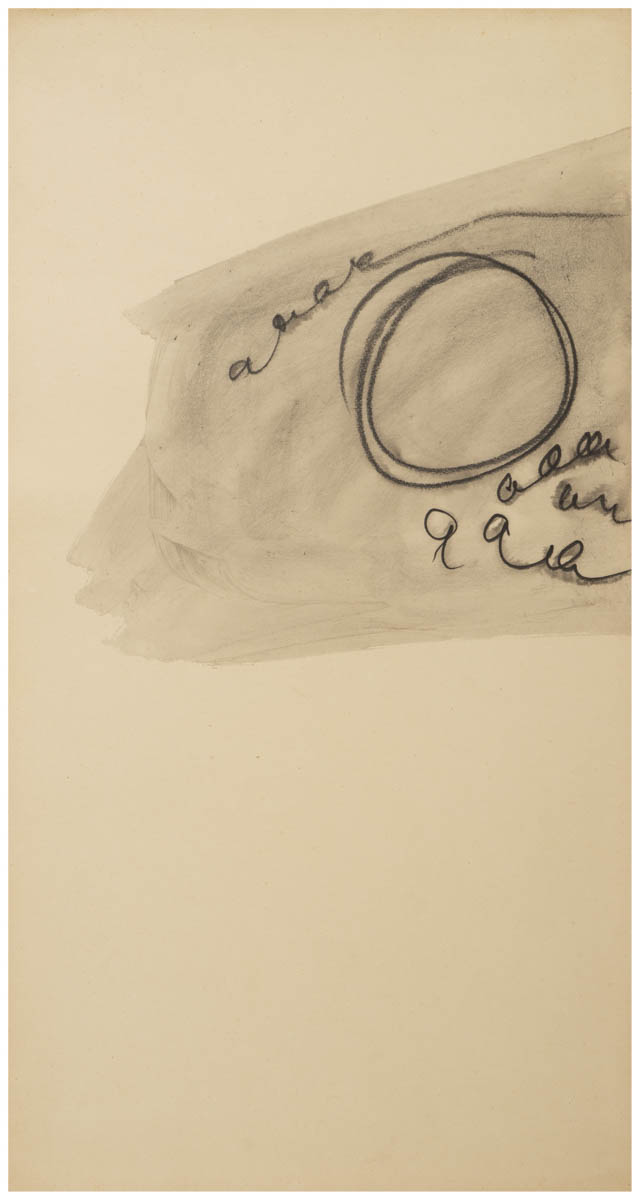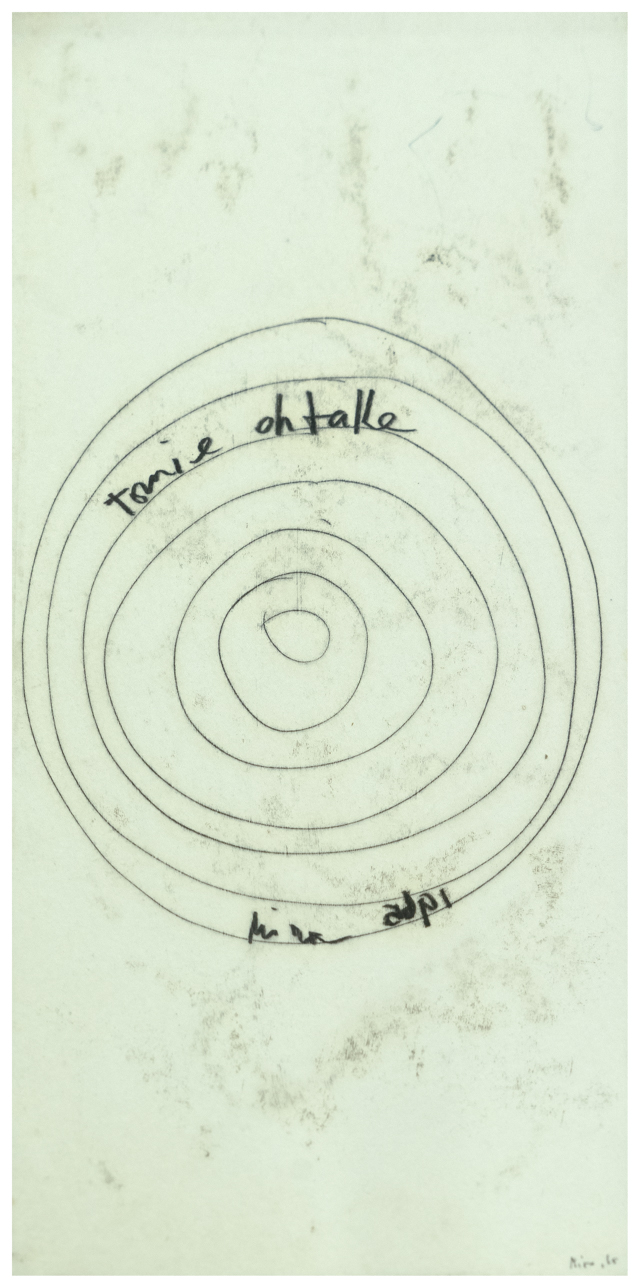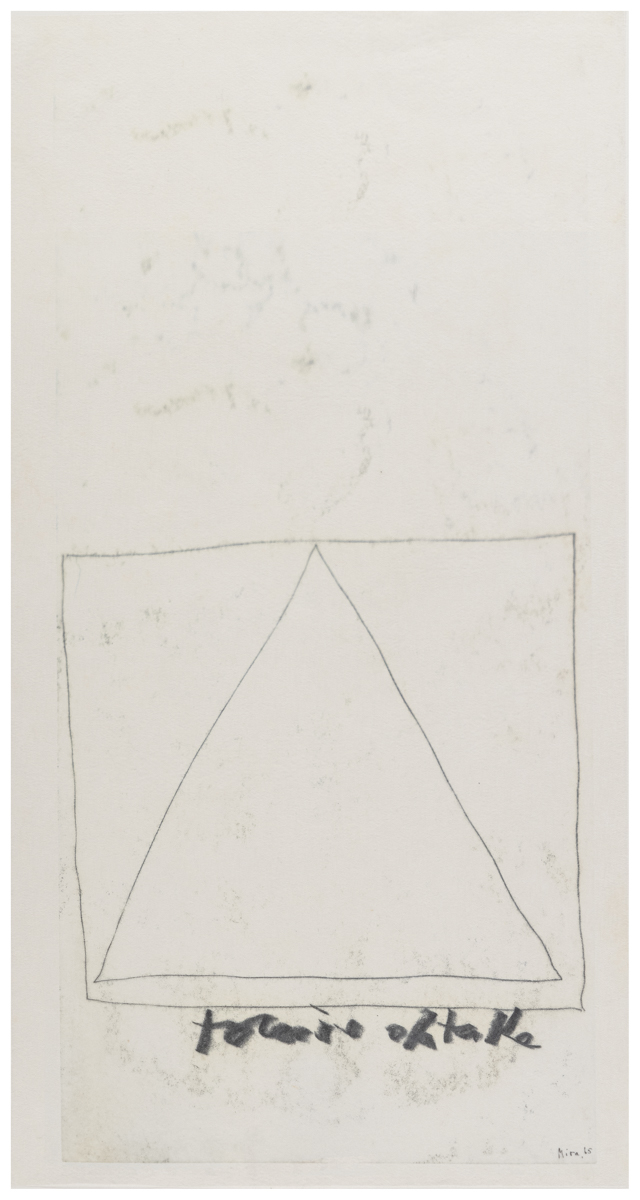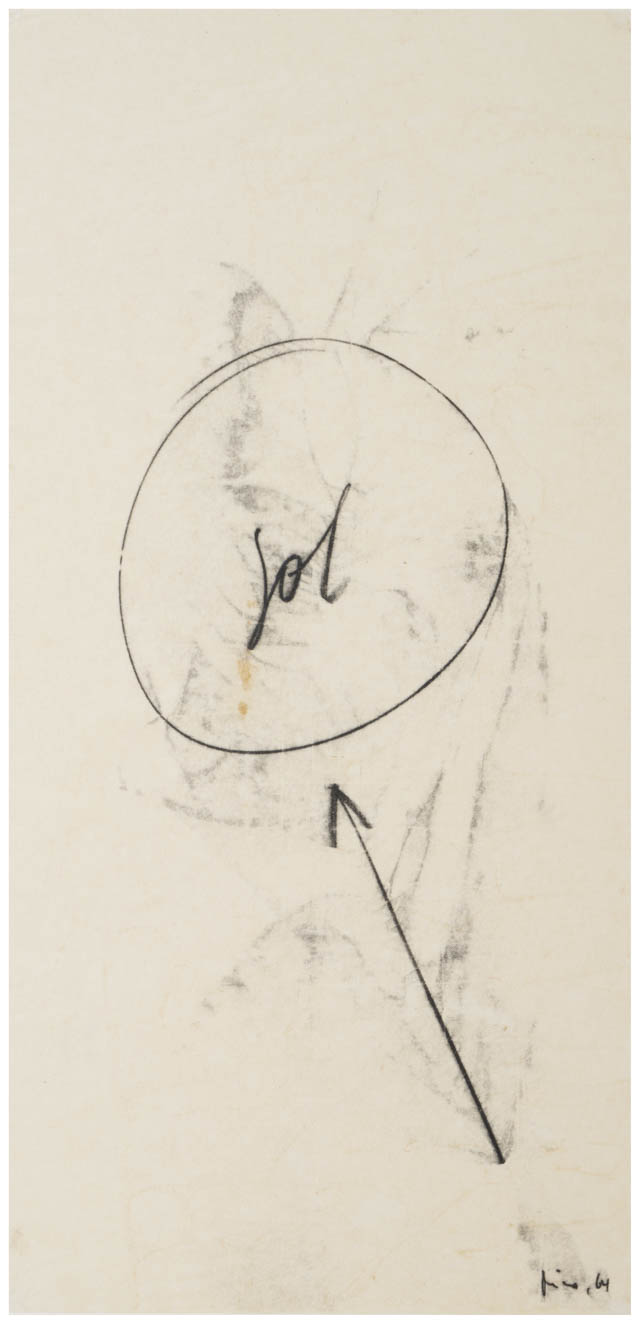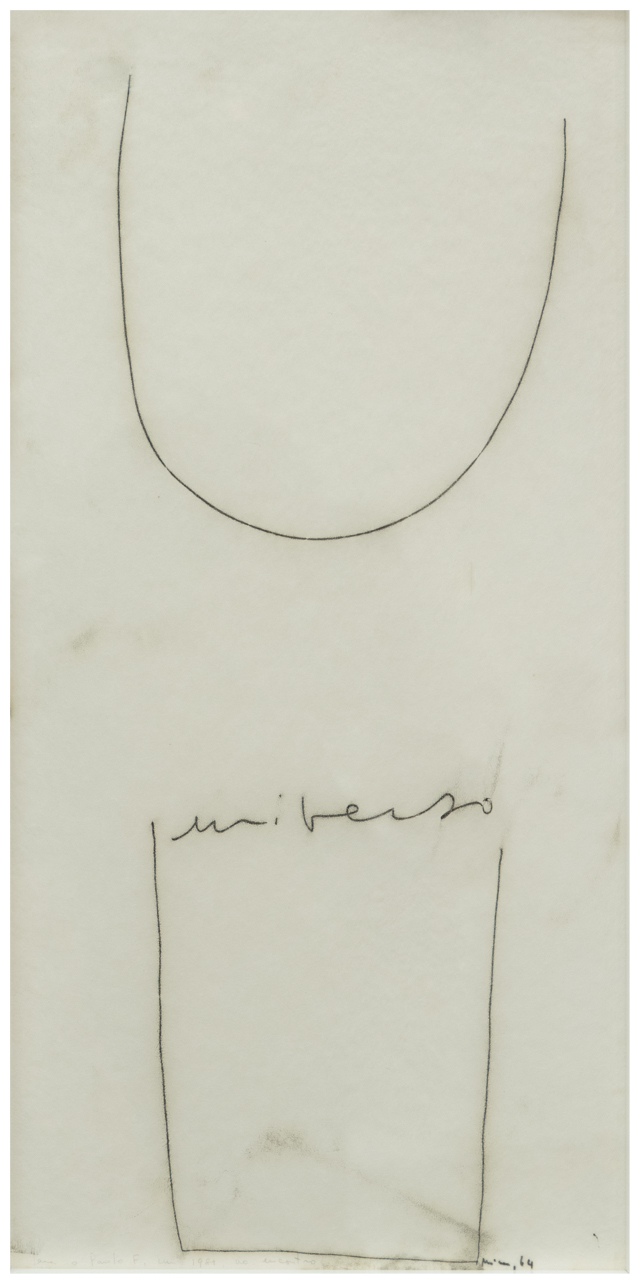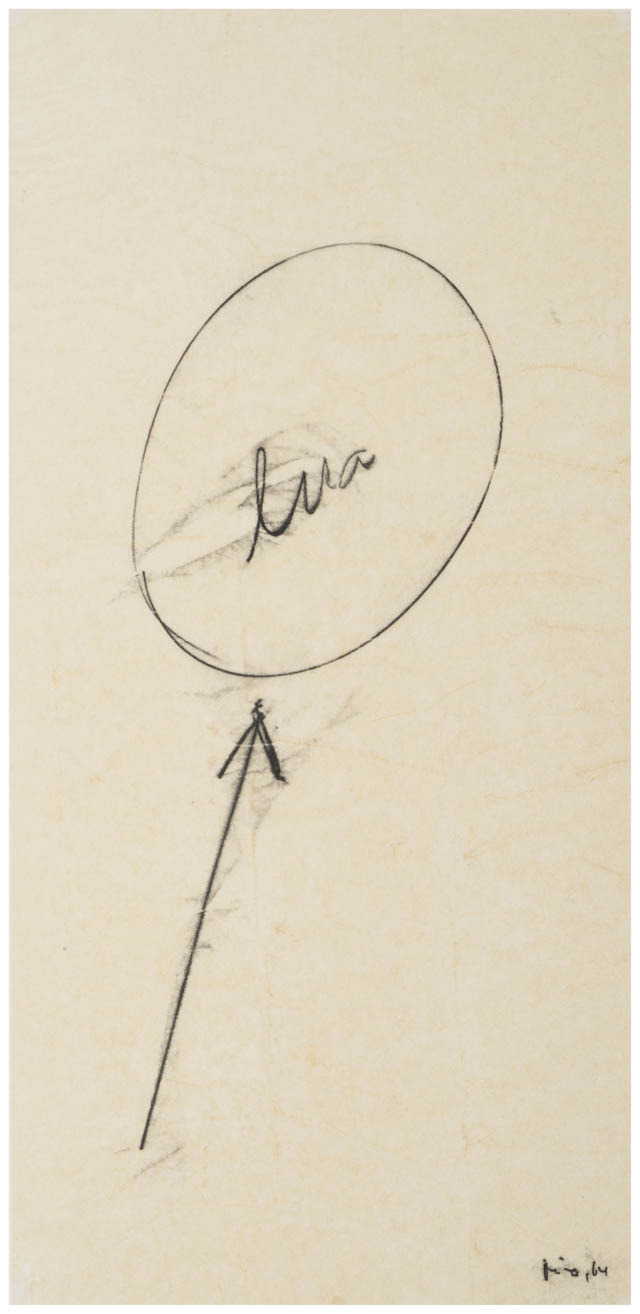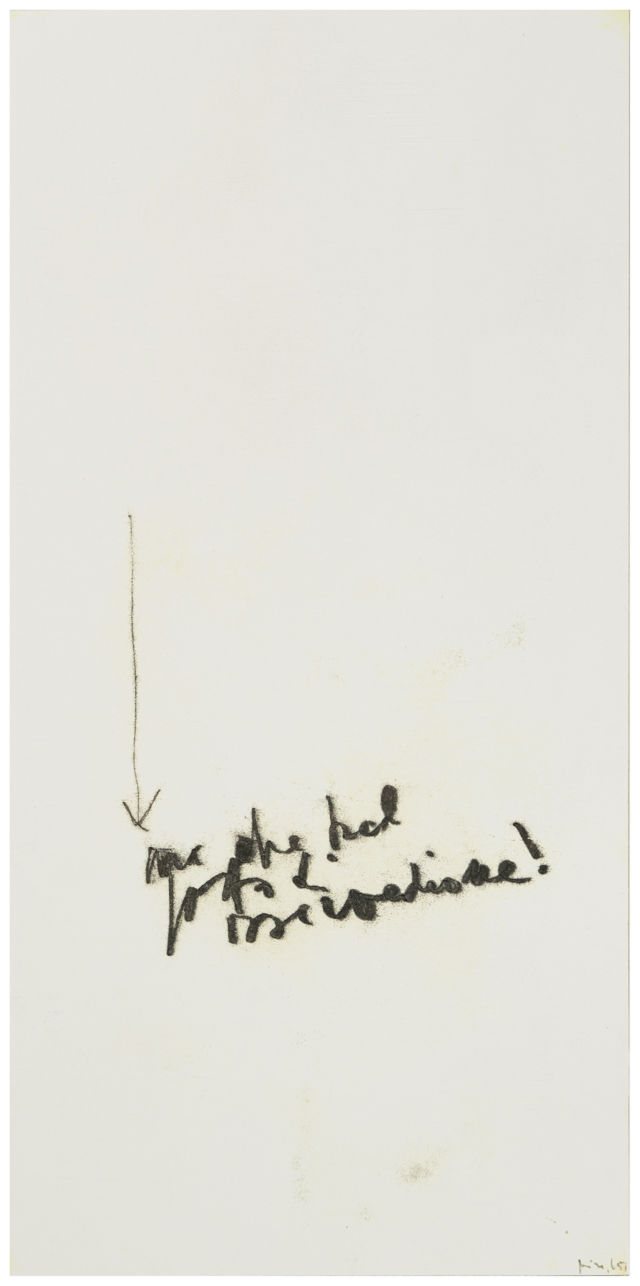A palavra em espiral
The word in a spiral
Poliglota e apátrida, Mira Schendel operou uma linguagem polissêmica, levando para a arte o italiano e o alemão, línguas que herdou dos pais, que aparecem junto ao português, língua oficial do Brasil. Eventualmente, surgem também palavras em latim e francês. A variação entre essas línguas é intensa e várias delas convivem em uma mesma obra. Essa diversidade de expressões e pronúncias efetiva a palavra no trabalho da artista como uma espécie de acontecimento de enunciação de algo, como se escrever/desenhar as letras e a sua decodificação fizessem realizar o que ali está posto. A palavra instaura, assim, uma situação. Além disso, Mira estava interessada nos arranjos que signos gráficos, palavras e textos eram capazes de constituir. Mira convivia com problemas de linguagem muito desafiadores: como apreender o instante presente, como fazer coincidir o “reino dos símbolos” (das letras) e a vida e como mobilizar a escritura e a leitura em percursos espirais e, portanto, não planos e não lineares. Em muitos experimentos, Mira estava lidando com as palavras e com textos em suas mínimas partes, tanto em seus sentidos denotativos, como em suas presentificações gráficas e matéricas, em grafias, espaçamentos e ritmos.
A polyglot and stateless person, Mira Schendel operated within a polysemic language, bringing Italian and German – languages inherited from her parents – into her art, alongside Portuguese, the official language of Brazil. Occasionally, words in Latin and French also appear. The variation between these languages is intense, and several of them coexist within a single work. This diversity of expressions and pronunciations activates the word in the artist’s work as a kind of event of enunciation, as if the act of writing/drawing letters and decoding them brings to life what is presented. The word, therefore, establishes a situation. Moreover, Mira was interested in the arrangements that graphic signs, words, and texts could create. Mira dealt with deeply challenging language problems: how to grasp the present moment, how to align the “realm of symbols” (of letters) with life, and how to mobilize writing and reading along spiral paths, which are, therefore, neither flat nor linear. In many experiments, Mira was engaging with words and texts in their smallest parts, both in their denotative meanings and their graphic and material presence, through handwriting, spacing, and rhythms.
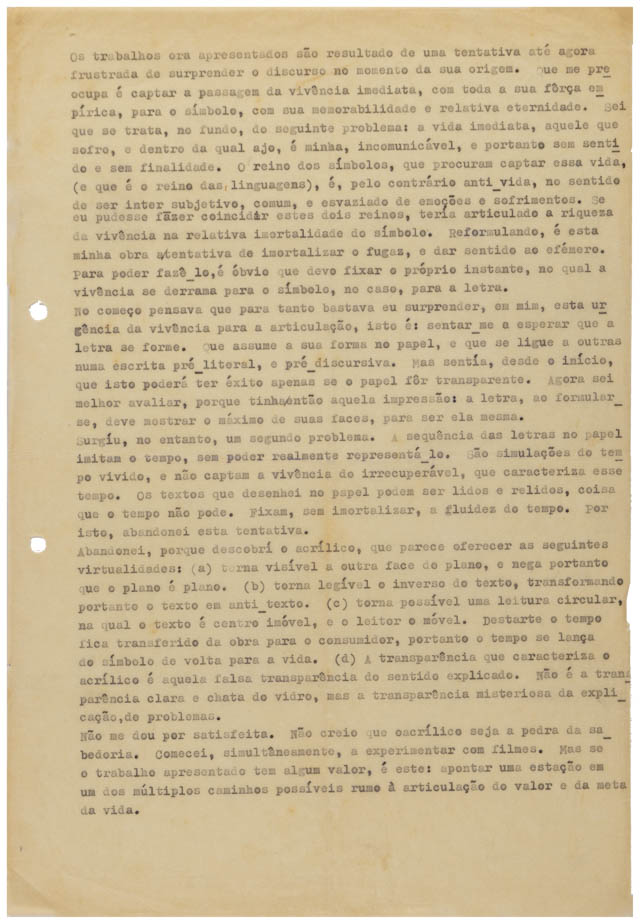 Mira Schendel, datiloscrito sem título, sem data. / Mira Schendel, untitled typescript, undated.
Mira Schendel, datiloscrito sem título, sem data. / Mira Schendel, untitled typescript, undated.
Os trabalhos ora apresentados são resultado de uma tentativa até agora frustrada de surpreender o discurso no momento da sua origem. Que me preocupa é captar a passagem da vivência imediata, com toda a sua fôrça empírica, para o símbolo, com sua memorabilidade e relativa eternidade. Sei que se trata, no fundo, do seguinte problema: a vida imediata, aquele que sofro, e dentro da qual ajo, é minha, incomunicável, e portanto sem sentido e sem finalidade. O reino dos símbolos, que procuram captar essa vida, (e que é o reino das linguagens), é, pelo contrário anti-vida, no sentido de ser inter subjetivo, comum, e esvaziado de emoções e sofrimentos. Se pudesse fazer coincidir estes dois reinos, teria articulado a riqueza da vivência na relativa imortalidade do símbolo. Reformulando, é esta minha a tentativa de imortalizar o fugaz, e dar sentido ao efêmero, para poder fazê-lo, é óbvio que devo fixar o próprio instante, no qual a vivência se derrama para o símbolo, no caso, para a letra.
No começo pensava que para tanto bastava eu surpreender, em mim, esta urgência da vivência para a articulação, isto é: sentar-me a esperar que a letra se forme. Que assume a sua forma no papel, e que se ligue a outras numa escrita pré-literal, e pré-discursiva. Mas sentía, desde o início, que isto poderá ter éxito apenas se o papel fôr transparente. Agora sei melhor avaliar, porque tinha então aquela impressão: a letra, ao formular-se, deve mostrar o máximo de suas faces, para ser ela mesma.
Surgíu, no entanto, um segundo problema. A sequência das letras no papel imitam o tempo, sem poder realmente representá-lo. São simulações do tempo vivido, e não captam a vivência do irrecuperável, que caracteriza esse tempo. Os textos que desenhei no papel podem ser lidos e relidos, coisa que o tempo não pode. Fixam, sem imortalizar, a fluidez do tempo. Por isto, abandonei esta tentativa.
Abandonei, porque descobrí o acrílico, que parece oferecer as seguintes virtualidades: (a) torna visível a outra face do plano, e nega portanto que o plano é plano. (b) torna legível o inverso do texto, transformando portanto o texto em anti-texto. (c) torna possível uma leitura circular, na qual o texto é centro imóvel, e o leitor móvel. Destarte o tempo fica transferido da obra para o consumidor, portanto o tempo se lança do símbolo de volta para a vida. (d) A transparência que caracteriza o acrílico é aquela falsa transparência do sentido explicado. Não é a transparência clara e chata do vidro, mas a transparência misteriosa da explicação de problemas.
Não me dou por satisfeita. Não creio que o acrílico seja a pedra da sabedoria. Comecei, simultaneamente, a experimentar com filmes. Mas se o trabalho apresentado tem algum valor, é este: apontar uma estação em um dos múltiplos caminhos possíveis rumo à articulação do valor e da meta da vida.
 Mira Schendel, datiloscrito sem título, sem data. / Mira Schendel, untitled typescript, undated.
Mira Schendel, datiloscrito sem título, sem data. / Mira Schendel, untitled typescript, undated.
The works presented here are the result of a frustrated attempt, so far, to capture discourse at the moment of its origin. What concerns me is grasping the transition from immediate experience, with all its empirical force, to the symbol, with its memorability and relative eternity. I understand that the underlying issue is this: immediate life, the life I endure and within which I act, is my own, incommunicable, and therefore devoid of meaning and purpose. The realm of symbols, which seeks to capture that life (and which is the realm of languages), is, on the contrary, anti-life in the sense that it is intersubjective, shared, and emptied of emotions and sufferings. If I could have made these two realms coincide, I would have articulated the richness of living into the relative immortality of the symbol. To reformulate, this is my attempt to immortalize the fleeting and give meaning to the ephemeral. In order to do so, it is obvious that I must capture the very moment when living pours into the symbol, in this case, into the letter.
At first, I thought it would be enough to capture, within myself, this urgency of living for articulation – essentially, to sit and wait for the letter to form. To allow it to take shape on the paper and connect with others in a pre-literal and pre-discursive writing. But I felt from the beginning that this would only succeed if the paper was transparent. Now I understand better why I had that impression: the letter, as it forms, must reveal as many of its facets as possible in order to fully be itself.
However, a second problem arose. The sequence of letters on paper mimics time, without really being able to represent it. They are simulations of lived time and do not capture the experience of the irretrievable that characterizes this time. The texts I drew on paper can be read and reread, which time cannot. They fix, without immortalizing, the fluidity of time. For this reason, I abandoned that attempt.
I abandoned it because I discovered acrylic, which seems to offer the following possibilities: (a) it makes the other side of the surface visible, thus negating the idea that a surface is merely flat; (b) it makes the reverse side of the text legible, thus transforming the text into anti-text; (c) it allows for circular reading, where the text remains a fixed center and the reader moves around it, thereby transferring time from the work back to the observer, dislocating time from the symbol back into life; (d) the transparency that characterizes acrylic is akin to the false transparency of explained meaning. It is not the clear, flat transparency of glass, but the mysterious transparency of the explanation of problems.
I am not satisfied. I do not believe that acrylic is the philosopher’s stone. I have simultaneously begun experimenting with films. But if the work presented has any value, it is this: to point toward a station along one of the many possible paths towards articulating the value and goal of life.
